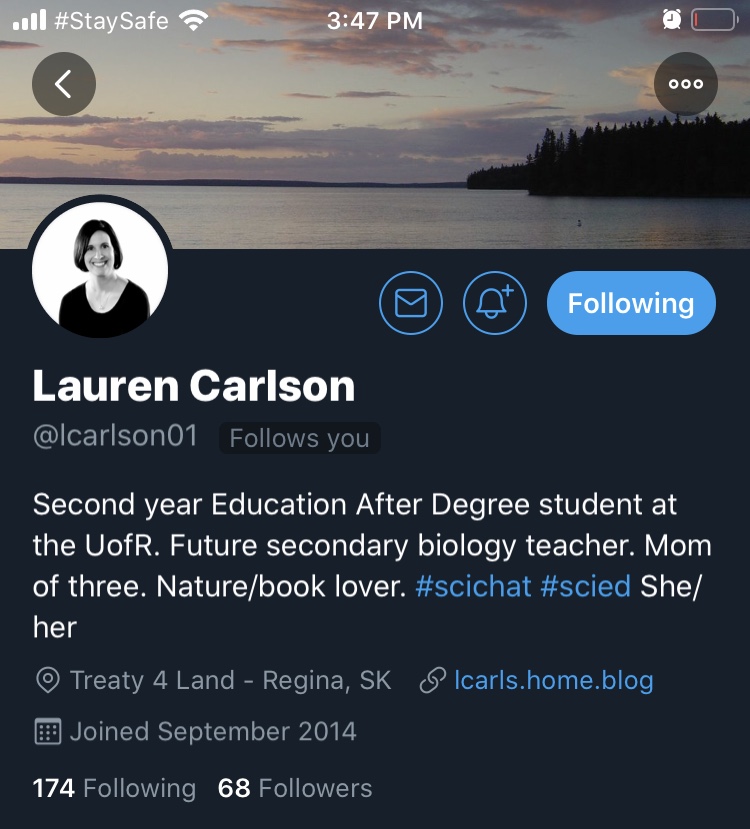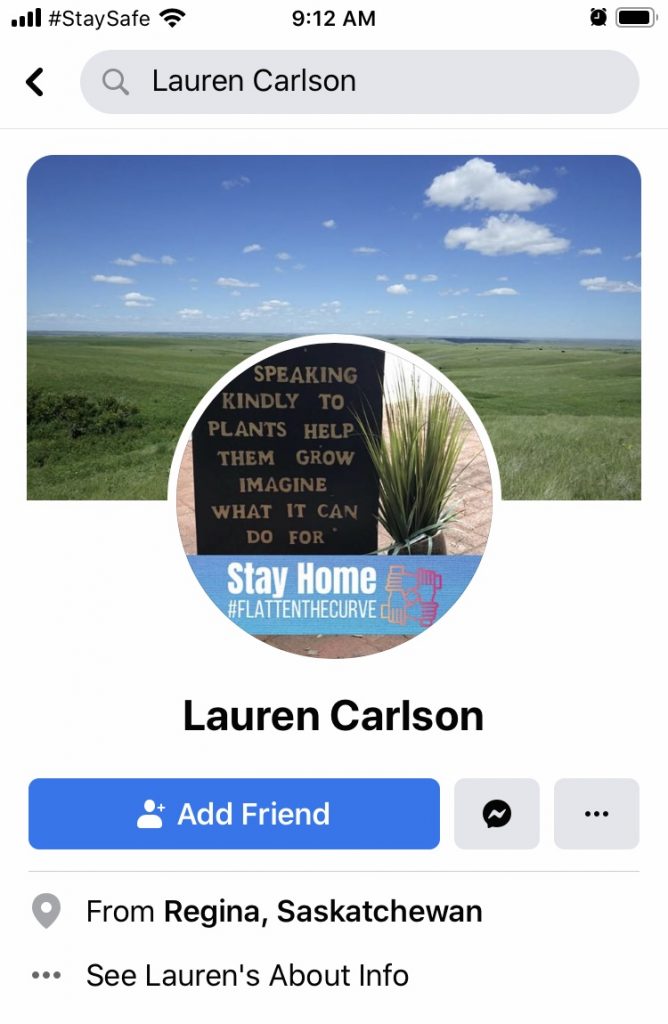When I read the prompt for our blog post this week, I was very excited. We have all tried our hand at cybersleuthing at some point, whether it was checking out a friend’s significant other that we haven’t met yet, Googling a new co-worker, or trying to find the name of that person we were introduced too and accidentally forgot.
During our class on March 4th, we had the opportunity to practice cybersleuthing former education students. This was a fun activity that allowed us to collaborate and share what we found online about the individual we were searching. It also allowed us to see how other group members went about finding information and what they pulled out as important information. We considered what was appropriate to post as an educator and what posts we should consider avoiding on our social media. This activity set us up to cybersleuth one of our classmates. I searched Lauren Carlson for this activity.

To start searching Lauren, I first went to Twitter. We follow each other, so I was able to see everything she has tweeted, re-tweeted, liked, and replied to. From Twitter, I also found out that Lauren is a BEAD student in her second year, a mom of three, and enjoys nature and books. I noticed that Lauren joined Twitter in 2014 and because I am always curious as to what people were like before they entered the Faculty of Education, I did some deep scrolling. She only had a few posts from 2014-2018 which were mainly about parenting and animal rights. A few of her older re-tweets contain curse words, but there is no inappropriate content that would concern me in regards to her being in a teaching role. More recently, her posts have shifted to educational resources and learning-related content that shows her dedication to the profession she is pursuing.

Lauren’s Twitter account gave me access to her e-portfolio and blog. From reading her e-portfolio, I learned that her first degree was in biology, she lives in Regina, and enjoys spending her summers at Waskesiu and Kenosee Lake (I work at Kenosee Lake in the summers, maybe we have unknowingly met!). One aspect of Lauren’s e-portfolio that I found particularly interesting was that she had a contact form option. If someone was wanting to contact her, they could fill out their name, email address, and a note about why they were wanting to contact her. This is a great idea as it allows people to contact her without having to give out her contact information. She can then moderate interactions depending on who is reaching out to her and why. I was also able to view some lesson plans she has created, as well as blogs from different education classes she has taken.

I then moved on to Facebook. I typed in Lauren’s name into the search bar and was unable to find her. I figured that she would likely have a Facebook account, so I went back to her blog and found her husband’s name. Once I searched her husband, it was simple to locate Lauren’s account. Her account is very private and I was only able to see a few pictures of her husband and kids that have been uploaded as profile pictures. I did not have any luck finding Lauren on Instagram and I did not have any results when Googling her.
Overall, Lauren has a great digital identity. She is public in posting about topics that relate to education and her future career (Twitter and her e-portfolio) and is private on the platforms that are more personal. If I was in charge of hiring, I would have no doubt that Lauren would be an amazing educator based on her digital identity.
This process encouraged me to reflect on my own digital identity. I checked that my Facebook and Instagram accounts were on private and made sure I did not have any content posted that could be taken out of context. I also Googled myself, which yielded some unexpected results. Articles from our local paper from years ago appeared. Luckily, these articles are positive and I believe may actually be beneficial for a future employer to see. This made me realize that things on the internet truly are out there forever, as I had forgotten that most of these articles were even written.
When reflecting on my digital identity and reading the article about having multiple online identities, I realized that my digital identity does change depending on which platform I am using.
This article discussed how common it is for individuals to have multiple accounts on a particular social media platform and how they present themselves differently depending on who is perceived to be their audience. Although I do not have multiple accounts on these platforms, the way I present myself does change. Similar to the article, I view it as “different sites, different audiences, different purposes.” Despite this belief, I personally believe that we as educators must be cautious of what we are posting, regardless of the privacy of the account. Although I do not have children, I still consider if I would want my future children’s teacher posting whatever I am planning on posting.
Our digital identity is so important because it has the ability to impact our future careers as educators. In the article 3 Ways a Good Digital Presence Can Get You a Job, it explains how a good digital identity can establish authority, allow for networking opportunities, and can convey passion and commitment towards the field you are interested in. After exploring these articles about digital identity and having the opportunity to search classmates and my own online presence, I am definitely more aware of the importance of digital identity. This experience has encouraged me to stay engaged online and share an appropriate balance of personal and professional content.




